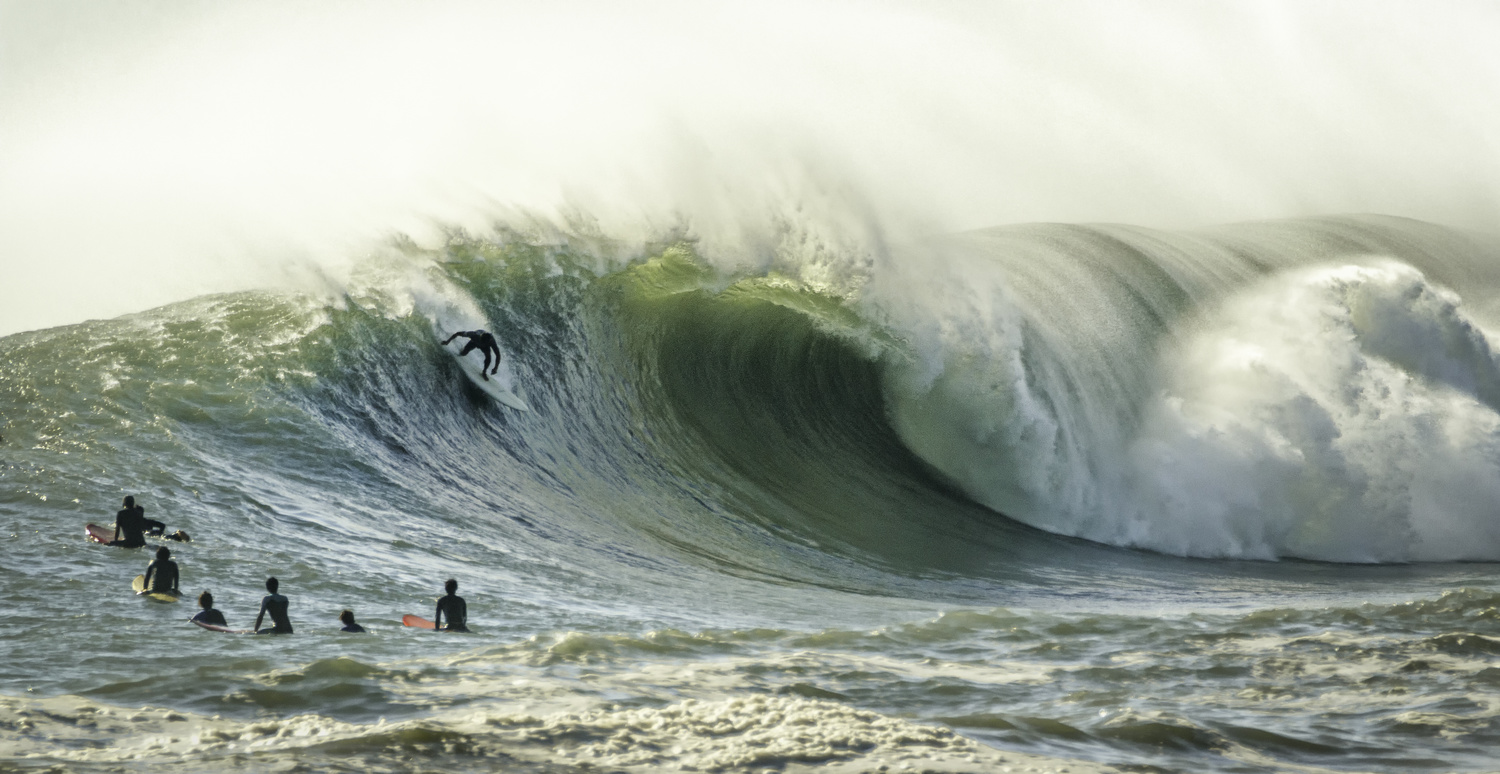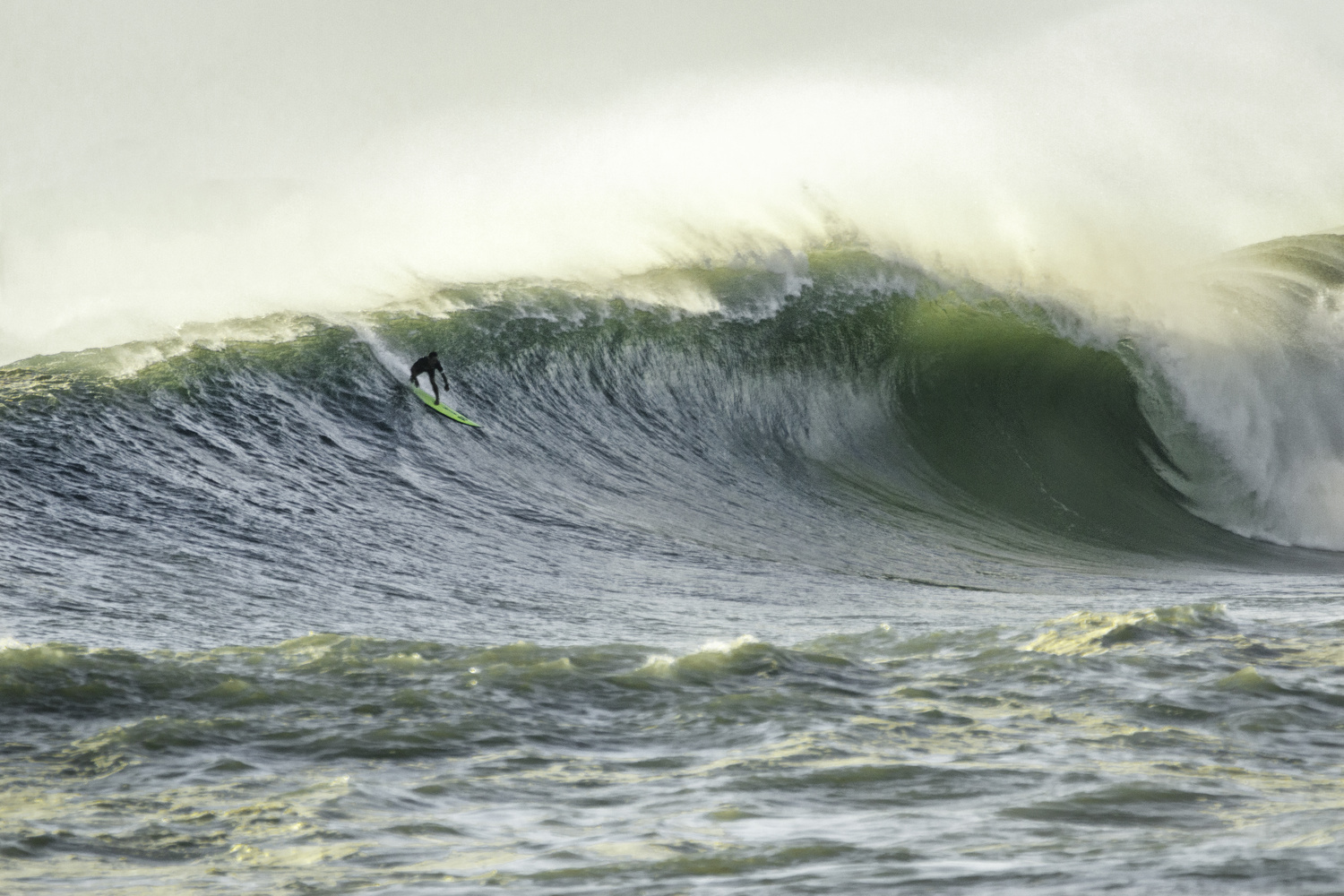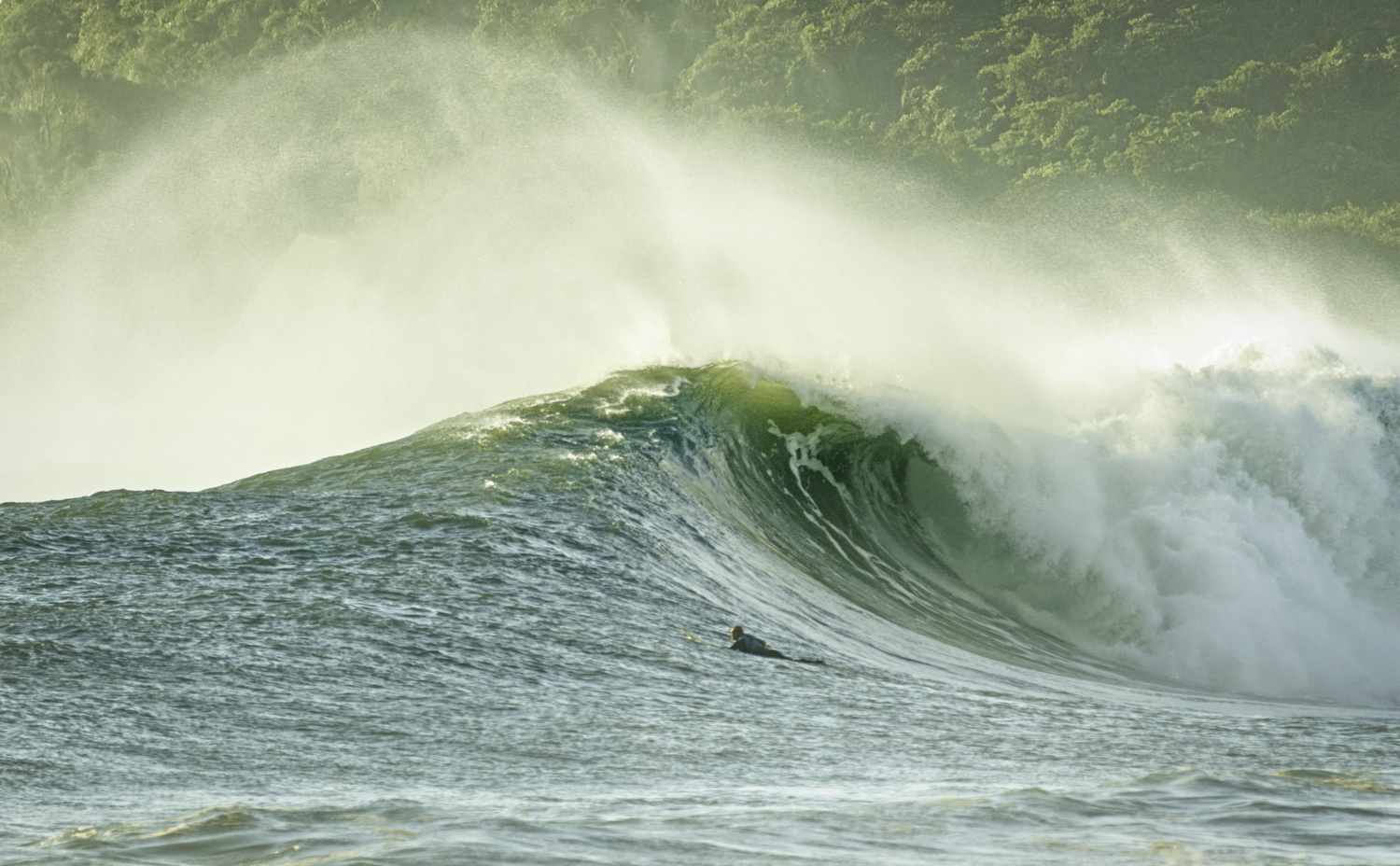While Typhoon Hagibis was causing destruction across Japan recently, some adrenaline junkies decided to go surfing at one of the country's most mythical big wave locations. I was there to capture these incredible scenes.
Japan falls prey to a lot of natural disasters. Earthquakes, mudslides, volcanic eruptions, torrential downpours, and of course, typhoons. The rest of the world likes to ascribe names to the typhoons that batter this part of the world each year but Japan simply gives them numbers. The recent Typhoon No. 19 was Japan's worst of the year by far and even led to some Rugby World Cup games being canceled. However, in the south west part of the country, we were somewhat spared from the worst of it. What we did get, however, were waves. Big, scary, menacing waves that only break a handful of times per year at certain, fabled locations. Luckily I live quite close to one of Japan's premier big wave spots and I was on hand with my camera to capture all the action.
Your Vantage Point
One thing to think about when you’re taking photos of surfing is where you set your camera up, or the vantage point. Basically you have three main choices: you can shoot from directly in front of the surf, you can shoot with the surfers surfing away from you, or you can shoot with the surfers coming towards you. Depending on where you are, there can be arguments made for all three. Sometimes you don’t have a choice and you have to set up wherever you can. Typically, however, I tend to set up with the surfers coming towards me. I find that vantage point gives you a bird's eye view into the wave so that you can see what’s going on with the surfer but you can also see what’s happening with the wave behind the surfer. This can really take the viewer into the scene much more and let their imagination run more wildly than if you were shooting from front on or with the surfers going away from you.

This picture above gives you an example of a vantage point where the surfer is going away from you. Basically, with this surfer his back will always be facing the camera and I will be following him down the line without being able to see into the wave. This is a great shot of a guy taking off and it gives you a sense of perspective about what’s going on around him but you can’t actually see into the wave behind him, or get a full appreciation of the full power and velocity of the wave exploding and unleashing its fury just meters away from the tail of his board.
At this particular location, this is the most popular vantage point simply because there’s a car park that’s easily accessible and it gives you the closest position to the surfers. It also means you can take photos with your phone camera or without the need for a particularly long telephoto zoom lens. Therefore, most of the shots you see of this place on Instagram or in surfing magazines when the waves get big show this angle. I don’t believe it does the wave’s power justice and that’s why I always try to shoot from across the bay looking into the wave. So with that in mind the following pictures will show you waves from my favorite vantage point.
Finally, once you’ve decided you vantage point, you need to think about what type of shots you’re going to take. At this place here it’s pretty easy because the number of guys riding waves isn’t that high but you still have to be mindful of when you press that shutter button. For me, I always try to really focus on three kinds of particular shots: the takeoff, wipeouts, and tubes. After that, I try to get shots that aren’t necessarily action shots, but ones that tell a story of the moment or let the viewer see more than just a singular act of surfing.
Takeoffs

Takeoffs, where the surfers first get to their feet at the start of the wave, are good to shoot for two main reasons. Firstly, it’s usually where the wave's at its biggest point. Waves, or swells of water to be more accurate, have usually traveled for hundreds and hundreds of miles in deep ocean water, building power and gaining strength and size. Once they approach more shallow waters they start to build in intensity and power so that when they finally hit that spot under the water that’s shallow enough for them to break they really jack up in size and explode in an initial burst of energy. From there they typically taper out down the line as surfers ride them. So getting images of that initial take off point where the wave hits the shallow part of the reef and increases in size and volume makes for wonderful viewing and spectacular photos.

Secondly, if you can get a wide enough angle, images of takeoffs really give the viewer an insight into what is about to happen. There’s a sense of anticipation as you look at what the surfer has before him. There is the steepness of the initial ledge, there is the explosion of white water behind, and there’s the big wide open face that he has to negotiate if he wants to find safety in the channel. Looking at the takeoff and seeing that open canvas before the surfer gives the viewer a wonderful sense of the unknown and allows the imagination to conjure up images of what might happen, or what you might do if you were in the same situation. It’s the unpredictability of what lies before the surfer in that very moment that makes photographing takeoffs so exciting.
Wipeouts
There’s something about human nature that dictates we enjoy watching spectacular crashes or things going wrong as long as no one gets hurt. This is especially true in surfing and big waves provide the perfect platform for such events to occur. When you have the size, velocity, and unrivaled energy of the surging ocean coupled with the brave souls who dare paddle out to conquer these forces of nature it provides an almost Colosseum like atmosphere where you’re left watching through wincing eyes as guys continue to get absolutely swamped and their boards annihilated and obliterated.

Thankfully, you tend to get some of the best wipeout images straight after takeoff. That’s because the takeoff part of the wave is usually the steepest section and the most difficult to navigate. Once surfers make the drop they tend to be able to shift their weight and reposition their bodies over the board to continue more comfortably along the flatter sections of the wave. But because the takeoff zone is so steep, you get a lot of guys who dig their nose into the face of the wave, which then catapults them forward headfirst into the trough. It’s not particularly fun for the surfers when this happens, but it makes for some wonderful images such as these.

Another composition that onlookers always love to see is the kickaway fly out, where the surfers eject themselves off the back of the wave because it’s running away too quickly for them. This isn’t technically a wipeout because it’s the surfer's choice to kick out but when they have so much speed and they exit off the back of the wave, it acts like a ramp and launches them high into the air. This makes for incredible images and lots of surfers play to the cameras by contorting their bodies into all sorts of entertaining positions once they’re in mid air.

The advantage of looking into the wave when you shoot this situation is that you can see what the surfer has missed out on. In this image above the surfer looks like superman flying through the air, or a pilot who has ejected from his burning plane, but what he won’t like seeing when he looks at this picture is the tube running away from him. I can guarantee you that every surfer looking at this image won’t be focusing on the surfer in the air or the photographer in the water for more than a cursory glance. Rather, their eyes will be glued to that giant, open green tube that is running away empty and unridden.
For those of you who don’t surf, the pinnacle of riding a wave is to slot yourself deep inside the open tube section for as long as you can so that you are entirely engulfed and swallowed in its bowels until you successfully navigate your way through and get spat out onto the clean, open face. This guy’s exit may be spectacular, but you can rest assured he won’t like seeing this and will be running that wave through his head over and over again wondering what he could’ve done differently to have gotten himself inside that tube. It’s the same as this guy below.

He will wince when he sees this image and sleep restlessly at night knowing that this gorgeous, inviting wave opened up so beautifully on the reef and begged for him to slot himself inside it. There’s a fine line between pleasure and pain and the fact that on this day, and on this wave, this guy let this one get away from him will gnaw at him for months on end. You might be thinking incredulously that he’s about to get absolutely pulverized by that whitewash but I can guarantee you he would take fifty more beatings on the head if he could just get one more chance at getting inside that gaping cavern. I’ve shown this image to dozens of my surfer friends and the first thing every single one of them said was along the lines of “No! How did he miss that? He’ll be hating life seeing that!” And by shooting from this angle you’re able to show the viewer this and give them the same experience of loss and frustration that this guy will surely feel.
Isolating Individuals
Finally, if you’re not familiar with surfing and you’re not really confident about the timing of your shots when you’re shooting surfers, one good thing to do is frame your compositions so that you have open, breaking waves along with single surfers in the frame. I always try to isolate surfers in order to give that sense of vulnerability and solitude the surfers feel when they’re out in the middle of the ocean surrounded by huge, roaring waves. The good thing about taking this approach is that you don’t need to worry about whether you’re taking a good action shot or not. By simply putting a surfer in the bottom third of the frame or on an edge of the frame opposite to a breaking wave you can really give a sense of perspective and draw the viewer into the story of what’s happening at that moment.

In this image above you can see an absolutely colossal wave heaving its way towards this guy in the channel. When you look at this you’re immediately struck by the sheer size of the wave but you also wonder at the same time whether this guy could have put himself into position to actually catch it. I mean, he’s out there, so he obviously wanted to ride waves. That being the case, why didn’t he put himself a little bit deeper so he could have given himself a chance at getting this? When you isolate subjects like that you’re able to give the viewer an opportunity to ask a lot of questions, which is really what you want to happen whenever someone looks at one of your images.

It’s a similar story with this picture above. This guy had just caught a pretty average wave and as the photographer I knew that it wouldn’t really make the cut as far as highlights went from this day. But as he paddled back out an absolute bomb broke on the reef and reeled across it in perfect symmetry right in front of his eyes. I love this shot because of the early morning flecks of golden light throughout the frame, but more so because this guy would have been looking into this wave wondering why his one wasn’t like that and why he’d waited so long only to get an average wave and then have the added frustration of seeing this thing immediately behind his wave running perfectly across the reef. We’ve all had those feelings as surfers and we’ve all experienced these conflicting emotions after we’ve chosen the wrong wave to ride. These are the sorts of things that can happen in surfing and if you can isolate subjects in situations like this you can really add an extra emotional element to your composition for the viewer and the subject.
Summing Up
If you're lucky enough to live near big wave locations, you should always check for different vantage points. Very often, the most popular one won't necessarily be the best one. Takeoffs, wipeouts, and isolated subjects are always popular shots so aim to get them, preferably with the open tube visible behind the surfers. Some days everything comes together perfectly and you can only marvel at the battles between humans and nature in such circumstances. Very often, nature wins but sometimes the surfers conquer their fears and the forces of Mother Nature. When they do, they're left with feelings like this.

Not many people think of Japan as a big wave location so I'd love to hear your thoughts or see your own images of big wave spots. Please leave your comments or images below







Good shooting
It was an amazing day for it :)
Beaut images and fantastic writeup. Thanks for putting it together. Think I'll have a crack at putting some of this together at the nearby surf beaches.
Cheers Simon. Just go scouting for different positions on days when the surf’s no good. That way, you’ll know exactly where to go when the conditions light up.
Thanks Iain, that's a good tip, too. I'm only 25min from the surf, I really should get there much more often...
I look forward to seeing your shots!
I never get tired of looking at these. There's something endlessly fascinating about the shape of waves and breasts.
Perhaps being inside a wave is like being inside the womb...the breast part...let’s stick to waves haha! On a more serious note, more and more scientific evidence on the reaction of brainwave patterns when people interact with the ocean is coming out now. It’s fascinating how calming and uplifting the ocean makes us - not just a sense but in real, documented research with very modern technology
Great shots, and wonderful writing. Thanks.
Cheers. Unfortunately, if it’s not an article raging about gear wars or brand loyalty it seems to disappear in the bowels of the internet quickly. Glad you liked it 👍😃